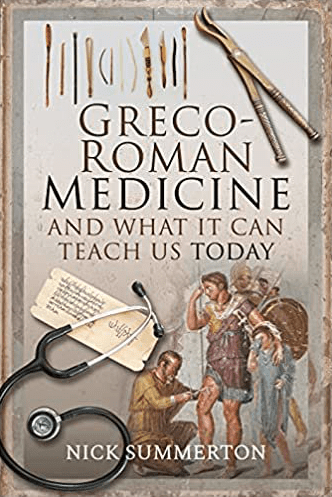Arpan K. Banerjee
Solihull, United Kingdom

The Republic of Rome was founded in the sixth century BC. In the third century BC, the western Roman Empire began to spread outside the borders of Italy. Roman rule came to Britain in AD 43 with the invasion by Claudius and ended in AD 476. The eastern Roman Empire, which extended to the Byzantine area, lasted for another thousand years until the fall of Constantinople in 1453 to the Ottoman Turks.
During the 400 years the Romans ruled Britain, they made significant contributions to cultural life. Improvements were made to the transportation system with the building of roads. Towns and urban settlements saw improvements in hygiene with the building of sewers and advances in medicine, which today we often take for granted.
Roman physicians were influenced by the Greeks, especially Hippocrates, and of course Galen, who thought that doctors should also understand philosophy. He believed that it took about eleven years to train a physician. It is interesting to note that today it takes about the same length of time to specialize and train, despite the immense advances in knowledge that have occurred in the last 2,000 years.
Other influential physicians in the Roman era included Celsus, who wrote an encyclopedia of medicine and first described the signs of inflammation such as swelling, redness, heat, and pain. Celsus also discussed the two prevailing theories of his day, notably empiricism and dogmatism (or rationalism). Empiricists believed that it was most important to know how to cure a condition, while rationalists placed a greater emphasis on understanding the cause of disease. Training of physicians in Roman times was through apprenticeship and study of the medical canons of the times. Medical regulation was already an important issue, as described by Pliny the Elder who wrote that only a physician could commit homicide with complete impunity. Indeed, a first-century AD Roman physician, Scribonius Largus, quotes from Hippocrates and reminds the readers of his pharmacology book that “medicine is the science of healing and not harming.” Hippocrates, of course, had already provided doctors with a moral code of conduct in the Hippocratic oath. The Romans built hospitals primarily for their soldiers and slaves and can be credited with many surgical advances, including the development of many surgical instruments that remain in use today, albeit in modified forms. Surgical scalpels and scissors, bone drills, spatulas, saws, probes, and male catheters were all developed and used during this time. Ophthalmology and urology were areas of study in Roman times. The pharmaceutical armamentarium was limited and treatment was often influenced by religious beliefs and superstition. Herbal remedies were common. It is interesting to note that Roman doctors were trying to interpret the dreams of their patients almost 2,000 years before Sigmund Freud did so.
The Romans knew about the importance of good air quality, sanitation, nutrition, and sleep. Doctors of that era knew the importance of listening to the patient, asking them questions, and taking a good history to ensure a satisfactory diagnosis. People were also aware of the importance of analyzing their excretions, although it would be another thousand years before sophisticated diagnostic tests would transform medicine into modern practice.
Roman doctors were also aware of mental health issues. Drama, painting, and music were used to promote mental health. The Stoics also advised that there was no point in worrying about things that were beyond one’s control. Marcus Aurelius, in his famous Meditations, wrote that the key to having a good life was to value things that were genuinely valuable and to be indifferent to things that had no value.
The author of this fascinating book is a doctor who has worked in family medicine and public health and has a great interest in Roman history and ancient medicine. He has meticulously researched the medical practices of the Roman era, drawing evidence from previously published literature as well as archaeological and palaeopathological sources with exhaustive accompanying references. This book gives valuable insights into the contributions of Roman medicine and thought and how many of those ideas have stood the test of time.
Greco-Roman medicine and what it can teach us today
Nick Summerton
Pen and Sword Books, 2021. ISBN 9781526752871
ARPAN K. BANERJEE, MBBS (LOND), FRCP, FRCR, FBIR, qualified in medicine at St. Thomas’s Hospital Medical School, London. He was a consultant radiologist in Birmingham from 1995–2019. He served on the scientific committee of the Royal College of Radiologists 2012–2016. He was Chairman of the British Society for the History of Radiology from 2012–2017. He is Chairman of ISHRAD and adviser to radiopaedia. He is the author/co-author of numerous papers and articles on a variety of clinical medical, radiological, and medical historical topics and seven books including Classic Papers in Modern Diagnostic Radiology 2005 and The History of Radiology OUP 2013.

Leave a Reply